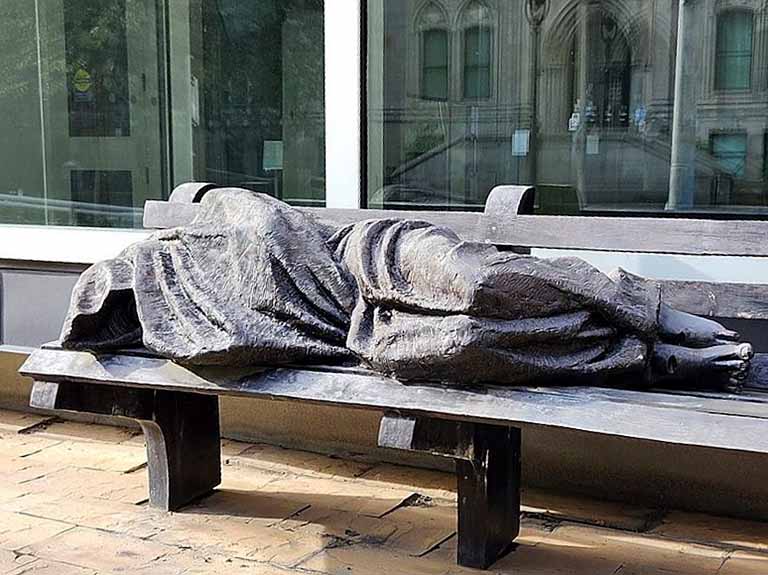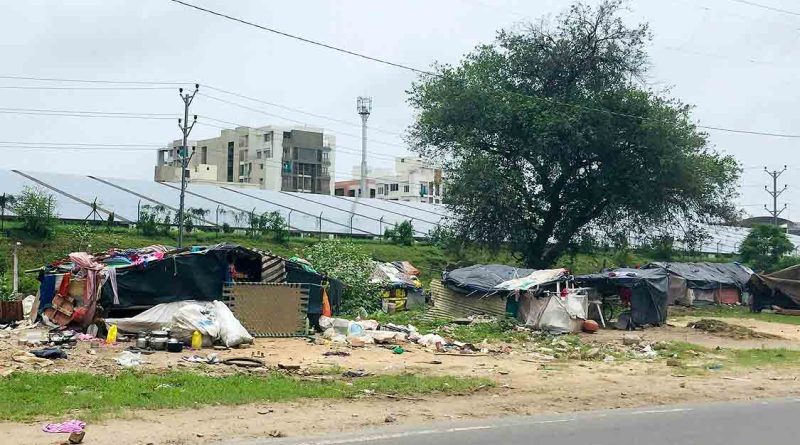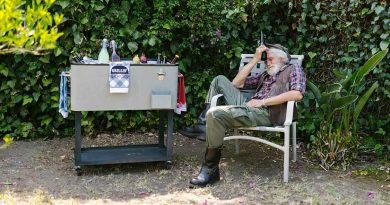The Eternal Question, Why?
Things That Matter, By Dennis Rizzo
Mosey to the parking lot across from Tim Horton’s on Colborne any Friday night. The Salvation Army is trying to provide for those people who we call homeless. Maybe we call them un-homed. Maybe we call them hobos, or bums, or addicts, or any number of labels indicating their less than status. We rarely call them someone’s son or daughter – mother or father – sister or brother.
Charity begins at home?
John E. Hanson said public charity has …roots in urbanization and the loss of “community” and mutual aid prevalent in rural areas of Western countries. By their very nature, urban areas fostered industrial accidents, diseases, unemployment, poverty, family breakdown and other social and economic problems. …individuals and families without relatives or financial resources had few options: apply for public relief, appeal to private charities or beg help from strangers.
Historically, community assistance was available only to recognized members of that community – whether religious-based, geographical, or political. Outlanders need not apply. When people began congregating in cities and factory jobs prevailed, this sense of tight-knit community was lost. Kinship and social responsibility to the group eroded as competition for work became the primary focus of sustaining existence.
We all know about ghettos and ethnic communities in our cities [Little Italy, Chinatown, etc.]. These evolved to provide a base for people moving into strange places and served, to some extent, as the charitable support systems lost when small, close-knit communities were left behind.
Humanizing the Homeless is an international effort to bring the reality of unhomed people to light with photographs and stories by Leah den Bok. It was reported she was recently, she was seen in Barrie. The plight of those without a permanent place to rest their heads has been posterized and publicized ad infinitum. Yet, as Ellen Wolper pointed out in a recent letter to the editor, Overall, Orillia has half the homeless that Barrie has, with a population only a fifth of the size.
There are over 80,000 people experiencing homelessness in Ontario, which is up 51% since 2016.
The Sharing Place is seeing about 2,500 to 2,600 individuals per month coming through – about a 20 to 30% increase year over year. The fact this one (of three) food banks is serving many times more people than it had just five years ago should ring an alarm bell. The fact many of these people are seniors living on OAS, or people on ODSP, or working poor should scare us. The whole concept of working poor is a blemish on our society.
Why does Orillia have several times per-capita in desperate need than Barrie? What factors in our local and provincial economic systems sustain inequity?
What facets of life on the lake have turned the city into a haven for both the very well-off and the homeless?
Why do our seniors and people with disabilities have to rely on charity?
And why are we leaving our young people behind, creating a new population of desperate citizens for the future?
In some sense government-led support systems developed over the past eighty-odd years have worked – fewer people are dying in the gutters and fewer children die working as indentured servants in factories. Our cities typically don’t resemble the tatter shorn, pestilent alleys described by Charles Dickens and Frankie McCourt.

But we still have our armies of the road, as they were called in The Depression. We still have our drug addled and wounded veterans with PTSD, and couch surfing children. We feel proud to have the greatest economic system in the world, yet we have been unable to break the cycle of poverty and despair reformers tried to resolve two centuries ago.
A recent StatsCan study of emergency department use by homeless persons indicates homelessness in Ontario has been worsening over time, has been affecting younger cohorts, and has shifted geographically to smaller but rapidly growing municipalities. By 2017, the modal person experiencing homelessness had become a male in the 25-to-29 age category. …(and) the modal female was in the 20-to-24 age category in both 2010 and 2017.
This shift out of metro areas and involving younger populations is concerning. Primarily because the root causes of homelessness are not being addressed. Band aids are being applied where surgery is needed. Platitudes and prayers prevail in place of solid policy and funding.
Desmond Tutu made a poignant observation a while back, “There comes a point where we need to stop just pulling people out of the river. We need to go upstream and find out why they’re falling in.”
Recently, potential solutions were outlined by Linda Goodall, “The long-term solution … lies in addressing the root causes of homelessness. Increasing supportive affordable housing availability and addressing economic insecurity must be part of systemic solutions. These aren’t easy or quick problems to solve, but we believe they are solvable if we continue to work together and advocate as a community.
We bemoan the tax dollars paid out for social services. We gripe about the losers and addicts and lazybones who are sucking off the government teat. At the same time we refuse to increase funding for education, for training, for job placement services, and for housing supports to provide a stable platform for someone to obtain gainful employment. We refuse to pay for those very services that would make taxpayers out of tax users. Then we complain about the waste of money.
So the community response to charity should be investment in education, housing, transportation, and sustainable work. Are these being supported by our government? Are they being supported sufficiently, or is it a lick-and-promise approach? Is our communal charity building a stronger population or maintaining a slippery slope? Are we providing the leg up for our next generation or condemning them to a hand-to-mouth existence?
Is the situation so different from that of 200-300 years ago? If not, why not?
(Images Supplied)

Dennis Rizzo joins SUNonline/Orillia as a columnist writing on big issues affecting ordinary Orillians. He is an ex-pat Yank from New Jersey. Orillia, Ontario. Canada is his adopted home, but he has brought along a degree of puckishness and hubris. Dennis spent more than 30 years working in the field of disabilities, with some side trips to marketing and management. He presented and keynoted for many conferences and served on a President’s advisory committee. Dennis is the author of several journal articles and booklets in the field of disabilities and work and five non-fiction books, including “A Brief History of Orillia – Ontario’s Sunshine City.” He recently republished a novel set in 1776 and a mystery set in 1860. He also enjoys sitting in on music sessions around town when he can.




